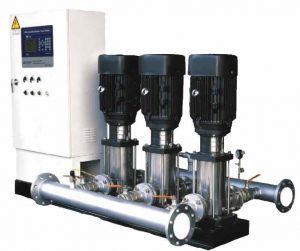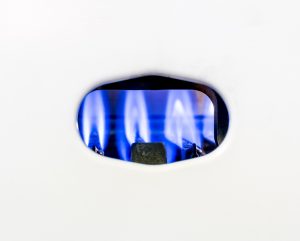Clearing the confusion about the coating and material of the tank in water heaters
Buying a water heater is a very important decision in itself. When you go to the market you shall come across different brands of water heaters which offer different features. The task of choosing the right one or the one which is best-suited to your needs can be daunting at times. Many a time it happens that people fail to understand some of the features of an appliance and get confounded and simply select the appliance which their friends or neighbors are using or in some cases make a decision based on whatever the salesman of a particular brand tells them. The manufacturers of water heaters tend to market their products by giving different names to some specific sections of their products. In this article, we will discuss about the materials used for the coating of the storage tanks of the water heaters.
The most important conditions which one wants to be satisfied while buying a water heater is the durability and the energy efficiency of the water heater. The coatings of the storage tanks directly impact these two conditions. Let us understand how.
Why coating is needed in storage tanks?
As the name suggests, storage water heaters store the water which can be used later use. As the storage tank is meant to store the warm water for some time (may range from a few minutes to an hour depending on the usage), it is bound to get corroded in due course of time. And it is needless to say that corrosion impacts the life of the water heater negatively.
In order to avoid corrosion, the inner surface of the storage tanks are coated with a layer of some anti-corrosive material which prevents the surface to get corroded even when it is in contact of warm water. This takes care of the factors which reduce the life of a water heater owing to corrosion of the inner surface of the water heater.
Materials used to make the storage tanks of water heaters
Typically these three materials are used for making the storage tanks of water heaters:
1. Copper
2. Stainless steel
3. Thermoplastic (also mentioned as polymer tank by some manufacturers).
Please note polymer coating and polymer tank are two different things (more details on polymer coating mentioned below).
The problem with copper is that it is a very good conductor of heat and thus results in the loss of heat (which we do not want in water heaters). Also, it is corrosive. Stainless steel provides better insulation but it also requires anti-corrosion coating on its surface. Thermoplastic is non-corrosive, but it is not as good as stainless steel in insulation. A Copper or Thermoplastic tank will require better insulation (as compared to stainless steel) to protect heat from going out of the tank. Life of stainless steel containers is also better as compared to copper or thermoplastic. So in general it is better to have a stainless steel container.
In order to overcome the issues of corrosion (or heat loss in case of thermoplastics), various techniques are used by the manufacturers in their water heaters.
Different kinds of corrosion protection coatings of storage water heaters in market
Various brands market their products in different ways which is why people get confused between which is what. It happens sometimes that there are two products having the same kind of coating but the names which are used for them by the manufacturers are different, so people think that the two coatings are different from each other, which is not the case in reality.
The major brands of storage water heaters are listed here “Comparison of various brands of Water Heaters/Geysers on BEE star rating in India”. In these brands, the different names of the coatings are as follows:
1. Porcelain Enamel Glass Lined Tank
2. Glasslined Coated Inner Tank
3. Vitreous Enamel Coated Tank
4. Blue Silicon Enamel Coated Tank
Moreover, there are a few companies (like AO Smith) which market their products with patented technology of storage tank coating with a different name, but apart from a few modifications, these all are same.
Apart from the Enamel or Glasslined coating, some manufacturers use Polymer coatings. Polymers are synthetic materials that are applied on top of the metal to protect it from corrosion.
What do these names mean actually?
In order to protect stainless steel from corrosion, the inner surface of the storage tank is fused with a layer of processed glass. Glass coating is known by various names, which makes it confusing at times to understand. Making a glass coating for any material is an elaborate process, but to have a basic idea, glass powders are applied onto the metal and when heated on a furnace, a glass coating is obtained on the surface of the desired metal. It is a very effective technique which provides tremendous resistance against corrosion. Apart from this, polymer coatings are also done on the surface of the storage tanks to combat corrosion. This again is a very effective way of providing strong corrosion resistance and insulation. Polymers are synthetic materials (just like paints) that are applied on metal to protect it from corrosion. The method of application of enamel/glass-lining is different from polymer coating, but the objective of both is to prevent corrosion.
Although glass lined storage tanks are widely used for corrosion protection in the storage tanks of the water heaters, still glass-lining can be damaged on persistent use for a long period of time. This kind of coatings cannot be guaranteed to give full protection against corrosion for a very long time. So theoretically, polymer coatings are better than glass-lining in case of corrosion resistance.
Conclusion
Water heaters’ manufacturers use different techniques to coat the storage tanks of the water heaters. So which water heater should you choose? While buying a storage water heater, it is important that take care of the following things:
1. The choice of material of inner tank is important as it drives the insulation of the water heater. Better the insulation lower the heat loss. And all of that is factored in the BEE star rating of the water heater as well as in the standing loss derived for the water heater. Although theoretically it is better to have a stainless steel inner tank for lower heat loss but ideally while buying you should look at the standing loss and BEE star rating of the water heater. A water heater with lowest standing loss and stainless steel container would be efficient and long lasting.
2. The warranty that is being offered by the manufacturer on the water heater inner tank is also very important. Ultimately it is all about how long the product would be able to function properly without any malfunctioning. The better the corrosion protection in a water heater, more durable it will be (be it enamel coating, glass lining or polymer coating) and the manufacturer will provide longer warranty on the inner tank. So it is advised that the warranty on the water heater should be checked before buying it.
References
http://en.wikipedia.org/wiki/Vitreous_enamel
http://en.wikipedia.org/wiki/Industrial_porcelain_enamel
http://www.kyodo-inc.co.jp/english/machinery/glass-lining-tank/vs-epoxy-comparison.html
http://www.hse.gov.uk/comah/sragtech/techmeasmaterial.htm





